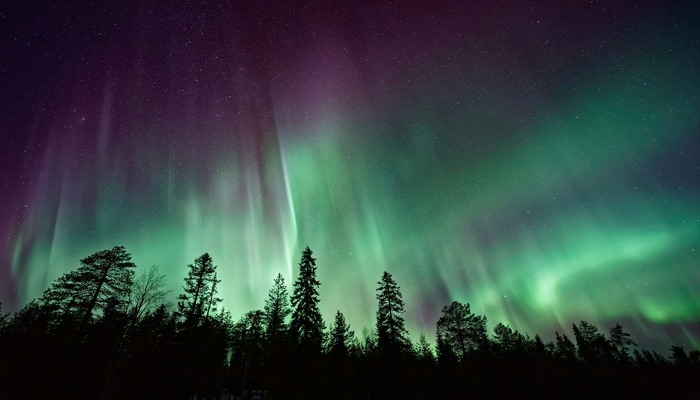
The Northern lights, also called aurora borealis, are likely to be seen on New Year’s Eve across the local zones of the US, in contrast to sightings earlier in the year, giving an ideal treat to skygazers.
However, residents in states along the Canadian border have an opportunity to witness this stunning celestial wonder.
These lights are seen in different regions within 1,550 miles of the North Pole. They frequently illuminate the skies in Alaska with their appearance, but in areas other than the US, they are rarely seen.
At the start of 2024, geomagnetic storms enabled the auroras to be seen in unanticipated locations all across the US, including sightings in Florida as well.
“A G3 (Strong) geomagnetic storm watch is in effect for Dec 31, with a G1 (Minor) watch for Jan 1,” due to a predicted “pair of Earth-directed coronal mass ejections (CME),” according to a NOAA forecast.
The forecast demonstrated: “We will not know the true potential of geomagnetic disturbance levels of response until the CME(s) arrive 1 million miles from Earth (when they will be about 30-60 minutes from reaching our planet) and their structure and intensity can be measured by our solar wind observatories - NOAA DSCOVR and NASA ACE spacecraft.”
"Also, neither CME is expected to be a direct hit, which also makes forecasts of intensity more difficult,” the forecast added.
According to the forecast maps released by the Space Weather Prediction Center, parts of over a dozen northern states have less chance of being within the "aurora view line" between December 30 and New Year's Day.
However, uncertainty exists regarding whether the aurora will be visible in any of the lower 48 states. Potential sightings are likely to occur in different parts of the states, including Washington, Idaho, Montana, Wyoming, North Dakota, South Dakota, Wisconsin, Minnesota, Iowa, Illinois, Michigan, New York, Vermont, New Hampshire, and Maine.
















